
Shade Trees to Adorn your Landscape
Published: 01/04/2024 | Updated: 13/05/2024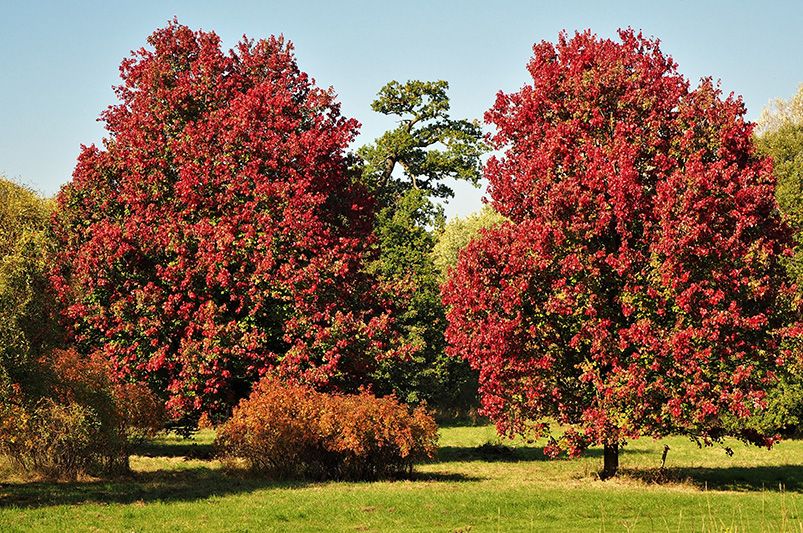
As they offer such relief from the sun's direct rays, shade trees could be all the difference between a habitable and inhabitable landscape in the summer months, especially in hotter areas.


This guide will walk you through the information you need to make up your mind about them and offer you ten recommendations so that you will have plenty of choices for a shade tree to plant in your landscape.
For more gardening and landscaping guides to help you along, check our weekly blogs where we cover everything related to landscape care and tips.
What You Need to Know About Shade Trees
Shade trees are an important element in landscaping, offering numerous benefits and adding beauty to outdoor spaces. In this guide, we'll go into detail regarding those benefits and uses, before we offer you our favorite shade trees to consider.
What are Shade Trees?
Shade trees are tall, deciduous, or evergreen trees that spread their branches wide, creating a canopy of shade beneath them. Their spreading limbs are their most distinct quality as it's which allow the formation of this canopy.
They have dense foliage, as well, which filters the sunlight, or obscures it depending on the tree, and reduces the intensity of the hot sunlight. They create a much cooler microclimate this way.
Planting and Care for Shade Trees
When planting shade trees, it's important to select the right tree species based on your climate, soil conditions, growing zone, and available space. However, care for all large shade trees is relatively similar. You should still focus on the peculiarities of the tree you're going to grow, but this should give you an idea of what growing the shade trees entails in general.
Planting
First, dig a hole that is wide and deep enough to accommodate the tree's root ball.
When you place the tree in the hole, make sure the trunk is straight and the root flare is level with the ground. At most, it should only be slightly above the ground. Backfill the hole with soil, and tamp it down gently.
Watering
As usual, you'll need to water regularly until the root system is established.
Afterwards, water deeply around 1 inch of water per week, during the growing season.
Mulching
Mulching is important for soil moisture and temperature regulation, as well as suppressing weed growth. Therefore, mulching could be a lot of help for shade trees.
Apply a layer of organic mulch around the base of the tree, leaving a few inches of space around the trunk.
Pruning
Pruning is important for almost all plants, but for shade trees, it's especially imperative. That is because of how large shade trees naturally are, they could get very messy. Pruning helps shape the tree and maintain its structure.
Prune shade trees to remove dead, damaged, or diseased branches as well, to ensure the health and long life of your trees.
Pruning is best during the dormant season.
Fertilizing
Regularly fertilize shade trees to provide them with essential nutrients. Use a slow-release fertilizer and apply in early spring or fall.
Benefits of Shade Trees
Shade trees offer various benefits. The most notable of them is their shade offering. The primary benefit of shade trees is their ability to reduce heat gain and provide cool shade during hot summer months.
Relatedly, they also improve air quality and reduce air pollution. Shade trees contribute to cleaner air by capturing and filtering pollutants such as carbon dioxide, ozone, and particulate matter.
On a larger scale, however, shade trees also offer numerous benefits with erosion control and offering wildlife habitat. Their extensive root systems help stabilize the soil, preventing erosion. Shade trees also provide habitat and food sources for birds, insects, and other wildlife.
Uses of Shade Trees in Landscaping
Shade trees can be used in various ways to enhance the aesthetics and functionality of a landscape. They offer shade and Relaxation. Strategically planting shade trees can create shaded areas for outdoor living spaces, such as patios, decks, and seating areas.
On the other hand, large, majestic shade trees add beauty and a sense of grandeur to the landscape. They can serve as focal points, drawing attention and adding to the overall aesthetics.
Planting shade trees along property borders also can provide a natural screen and enhance privacy.
In windy areas, shade trees can be planted strategically to create windbreaks. They help reduce wind velocity, protect delicate plants, and create a more sheltered microclimate.
10 Shade Trees to Plant
Now that you know all the reasons why you should plant a shade tree and how to care for it, here are our favorite ten shade trees to choose the most suitable form.
River Birch
River Birch (Betula nigra) is a popular tree species native to North America. It is characterized by its attractive bark, which peels off in thin, papery sheets, revealing shades of cinnamon, cream, and salmon-pink. The tree is also known for its tolerance to wet soil conditions, making it a great choice for planting near rivers or in other moist areas. Additionally, River Birch provides important habitat for wildlife, especially birds.
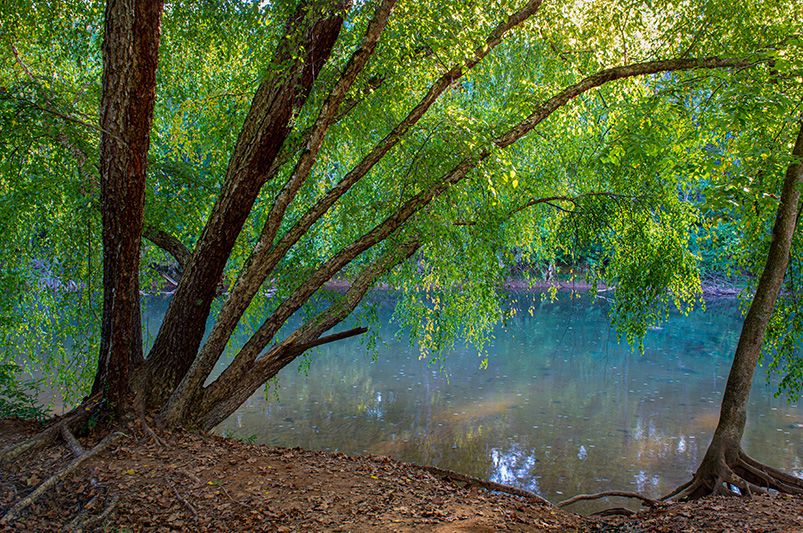
October Glory Red Maple Tree
The October Glory Red Maple tree is a popular choice among landscapers and homeowners due to its stunning fall foliage. The leaves turn bright red, adding a burst of color to any yard or landscape. Additionally, this tree is known for its rapid growth and adaptability, making it a great option for those looking for a tree that will mature quickly and thrive in a variety of soil conditions.
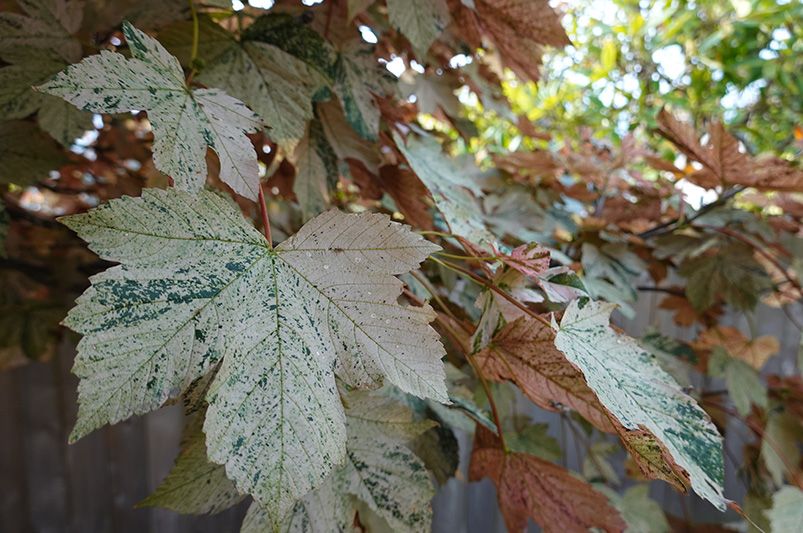
Eskimo Sunset Sycamore Maple
The Eskimo Sunset Sycamore Maple is a stunning tree that displays vibrant colors during the fall season. It features a compact and upright growth habit, making it ideal for smaller landscapes. The leaves emerge with hues of pink, cream, and green, gradually transitioning to shades of orange and red. Additionally, it is a fast-growing and low-maintenance tree that is tolerant of different soil types.
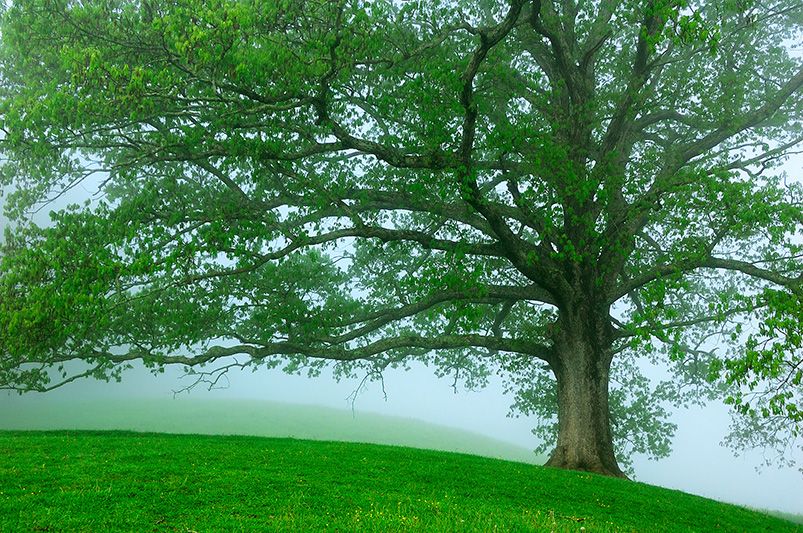
White Oak
White oak (Quercus alba) is a deciduous tree found mainly in eastern North America. It is a long-lived tree, known to survive over 400 years, and can grow up to 100 feet tall. The wood of white oak is highly valued for its strength, durability, and attractive grain pattern, making it a popular choice for furniture, flooring, and barrels for aging wine and whiskey. The leaves of white oak are also important to wildlife, providing food for 522 species of butterflies and moths.
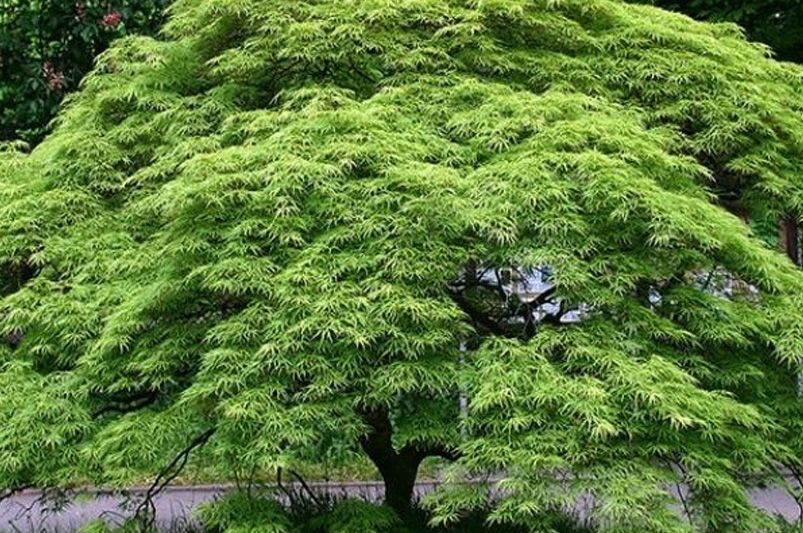
Green Laceleaf Japanese Maple
The Green Laceleaf Japanese Maple is a highly sought after variety of the Acer palmatum tree species due to its unique weeping branches and delicate green foliage. Its striking appearance makes it a popular choice for ornamental gardens and landscaping, adding a touch of elegance and beauty to any outdoor space. Additionally, the tree is relatively low-maintenance, making it a practical choice for those looking for a beautiful yet easy-to-care-for addition to their garden.
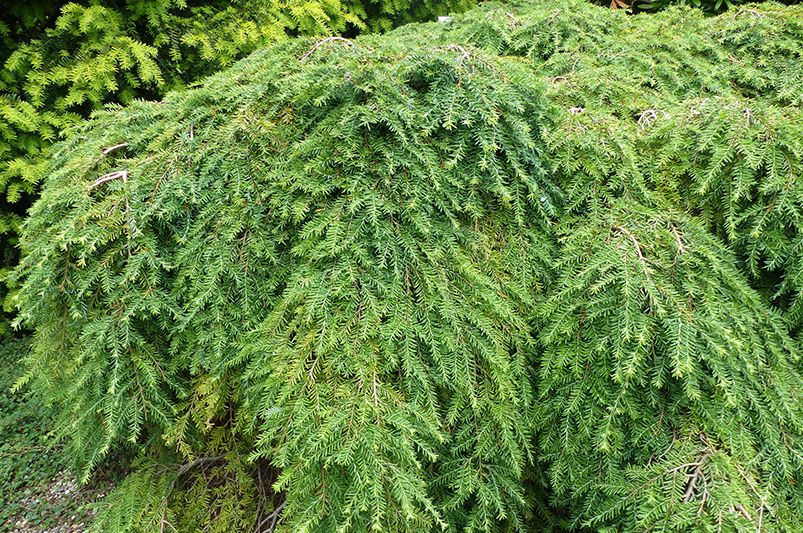
Canadian Hemlock
Canadian Hemlock (Tsuga canadensis) is a popular ornamental tree that grows in moist, shaded, and cool soils. It is a coniferous tree that belongs to the pine family. This slow-growing evergreen can reach a height of 50-70 feet and has a conical shape. It has a fine-textured foliage of flat needles that are soft to the touch. The wood of the Canadian Hemlock is lightweight, non-resinous, and used for making paper, lumber, and furniture.
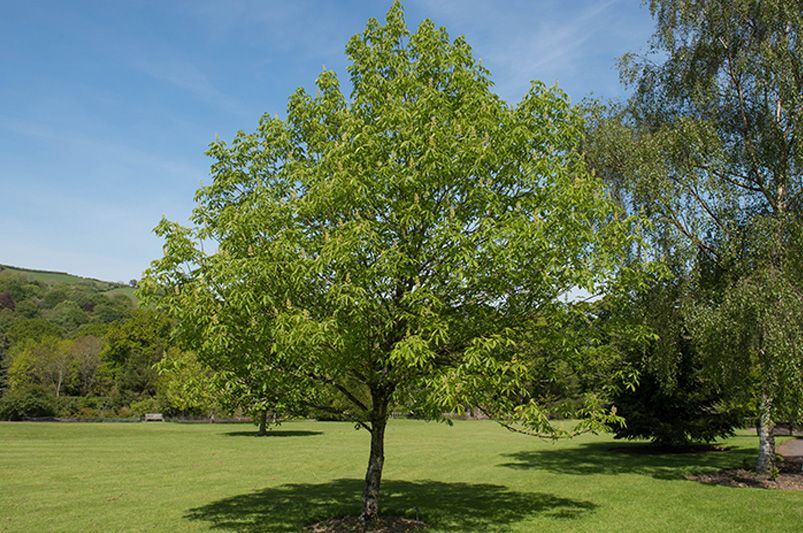
Ohio Buckeye Tree
The Ohio Buckeye Tree is a unique and iconic species of tree found in the Midwest region of the United States. It is characterized by its distinctive five-lobed leaves and its large, shiny brown nuts, which are toxic to humans and animals if ingested. The Buckeye Tree is often used for ornamental purposes and its wood is highly valued for its durability and strength. However, due to habitat loss and other threats, the Buckeye Tree is considered vulnerable and in need of conservation efforts.
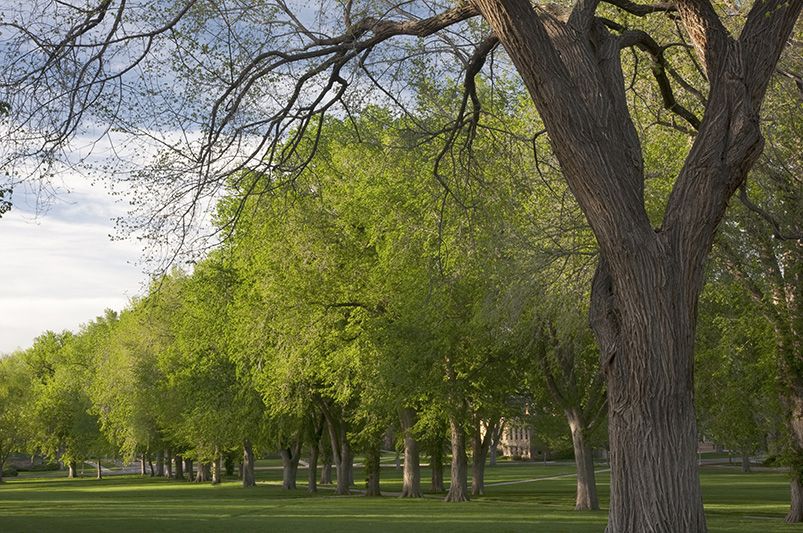
Valley Forge American Elm
Valley Forge American Elm is a disease-resistant cultivar of the native American elm species. It was developed at the Morris Arboretum in Philadelphia, Pennsylvania, and named in honor of the Revolutionary War site, Valley Forge National Historical Park. The tree is known for its upright, vase-like form, and can grow up to 60-80 feet tall. It is a great choice for parks and large landscapes as it is tolerant of urban conditions and easy to maintain.
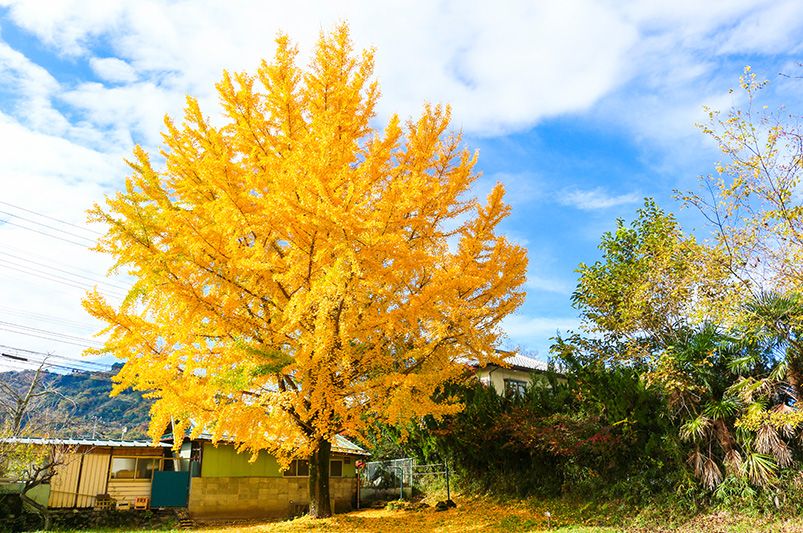
Princeton Sentry Ginkgo (Ginkgo biloba 'Princeton Sentry') is a popular choice due to its attractive upright columnar shape. This deciduous tree features unique fan-shaped leaves that turn a vibrant golden color in the fall. The Princeton Sentry Ginkgo tree is tolerant of a wide range of soil conditions and is known for its resistance to pests and diseases. This low-maintenance tree that adds beauty to any landscape and is a favorite among landscape designers.
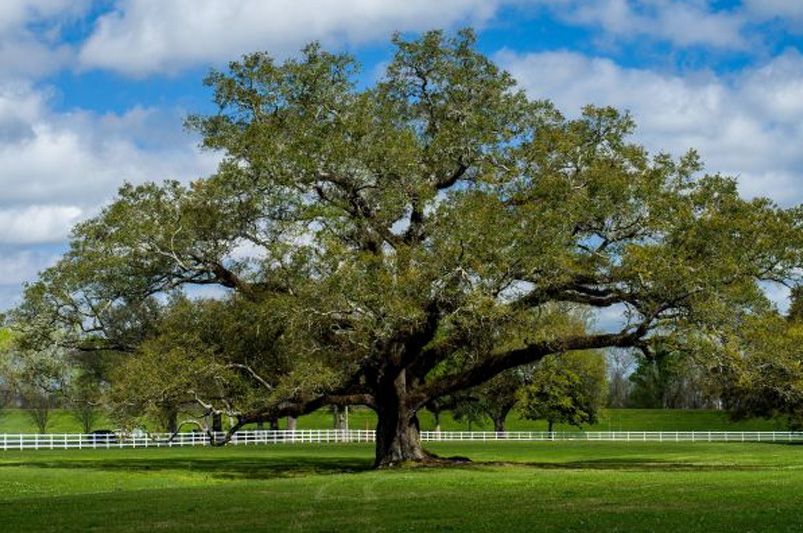
The Southern Live Oak (Quercus virginiana) is an evergreen tree that stands out for its longevity and beauty. It can grow up to 70 feet tall and is native to the southeastern United States. The tree is known for its spreading crown and thick trunk, which can reach up to 6 feet in diameter. Southern Live Oaks are revered for their strength and resilience, making them a popular choice for parks and other public green spaces.
Discover more shade trees at our Shrubhub garden market where you'll find more choices awaiting you. You can easily shop with growing zone, location, and desired size, and you'll find one that is tailor-made for you.
This gardening expert's guide will help you not only choose a shade tree for your landscape but also understand shade trees and care for them in the best way possible.
Planting a shade tree is a commitment, however, and you should be certain of your landscape design before you go for it. If you think your landscape could do with an update, then this is the perfect timing and opportunity for you as we're currently offering a 70% discount on all our design services at Shrubhub. You only need to sign up here and we'll contact you as soon as possible to get you started.


